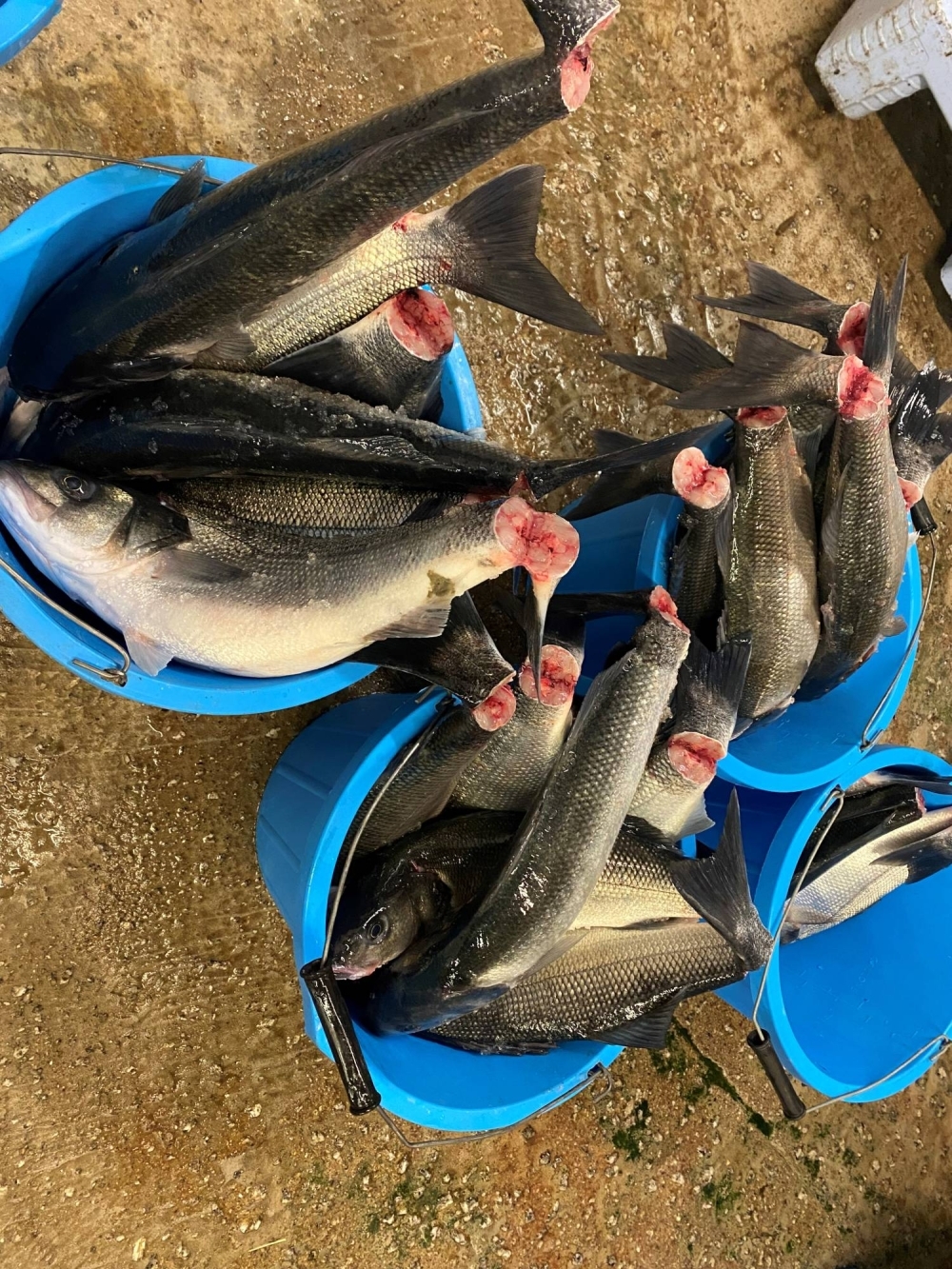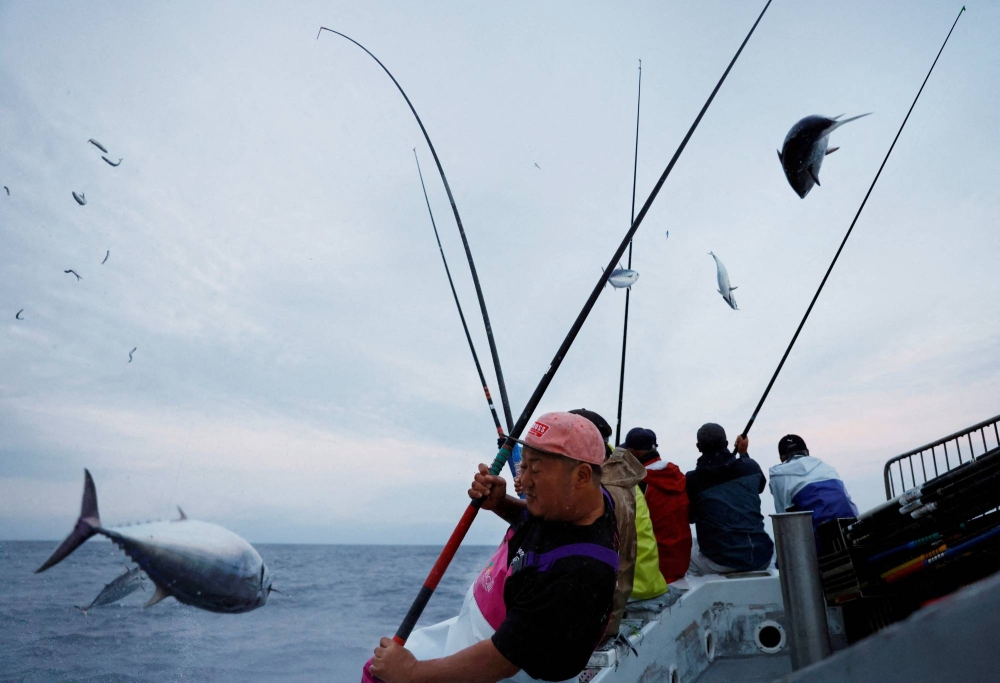Japanese ways of doing things have a tendency to gain currency in the West.
Whether it’s something fiddly such as kintsugi (repairing broken crockery with resin and gold flakes) or putting one’s house in order a la Marie Kondo, these ideas catch on inexplicably, often enjoying a lofty status above other homegrown techniques. Zen sells, as does sushi, a certain cultivated image of Japan.
Though far from Zen, this slow spread of Japan’s time-tested techniques includes ikejime. Roughly rendered in English as “locking in life,” ikejime is a fishing technique that delivers a quick death to the catch that ensures its freshness and the quality of its meat.
At its most basic level, to perform ikejime requires a tool called a tegaki — a short wooden baton with a hook attached. This is driven into the brain of the fish at a specific point to impede nerve signals that are triggered when a fish is aware of its impending doom.
The stress experienced by a fish dying from asphyxiation or even pre-slaughter through messy handling kickstarts a release of chemicals that exhausts their muscles. This greatly affects the quality of its flesh, producing lactic acid and increasing the onset of rigor mortis. Other methods of stunning or killing the fish — for example, using a wooden baton called a priest (unless you’re very accurate) — can also result in bleeding into the flesh.

In some markets, fish processed with ikejime and demand prices up to 40% higher than other methods.
| REUTERS
Details of when ikejime came about are vague. Some sources say 200 years ago, while others point to sometime in the Edo Period (1603-1868). It has even been claimed that a Japanese fisherman washed ashore in Korea and learned the technique there, though this is almost certainly a legend.
When or wherever it began, ikejime has taken hold and spread far from Japan’s waters. Its advocates and adherents can be found in such disparate corners of the world as Brittany, Sardinia, Cornwall and Veracruz. There’s even an international Ikejime Foundation, which hands out certification (though, in Japan, the process is not uniform), and a French outfit, Hookook, that manufactures modern equipment for the practice. It is also telling that the Michelin Guide sings its praises.
An introduction to ikejime
The emphasis on the quality of the fish as an end product is how British company Kernowsashimi started out back in 2005.
“My father was a fisherman, so naturally I grew up working on the boat,” says co-founder, Dylan Bean. “Following university, my roots pulled me back to Cornwall and fishing.”
Bean was aided in this endeavor by his future wife, Mutsuko, who hails from Koshigahama, a fishing village in Hagi, Yamaguchi Prefecture. The idea for Kernowsashimi was to directly supply restaurants looking for a higher quality of fish available at markets.
“We then expanded our supply by welcoming other small day-boats in and around our community, rewarding them with higher prices in exchange for adopting fishing and post-harvest management techniques that improved the quality,” Bean says.
In 2012, Kernowsashimi got a call from Yoshinori Ishii, head chef at London restaurant Umu. Bean explains that Ishii was “dismayed” by the quality of fish available at nearby markets and was on the lookout for fishermen interested in learning about ikejime — not only to improve the quality of their catch but command better prices.
“None of our fishermen knew about ikejime, so it was completely new,” says Bean. “The only process slightly similar was the bleeding of large flatfish like turbot, but that was mainly due to aesthetics, to prevent the white side going pink.”

Founded in 2005, U.K. fishing operation Kernowsashimi gradually adopted ikejime techniques to boost the value of its catches off the shores of the British Isles.
| COURTESY OF KERNOWSASHIMI LIMITED
As well as the crucial bleeding stage, there’s also the additional process of shinkeijime (literally “nerve locking”). This involves inserting a wire along the spinal column of the fish to destroy the nerves that can still carry signals after death.
Bean says that, initially, the practices that Ishii taught were met with a certain amount of skepticism.
“(It was) partly due to the time and fiddle involved, partly due to limited market interest — but mainly because ikejime is only really applicable to line-caught fish, and most of our boats were using static gill nets and tangle nets.”
The way of the hook
While Ishii served as the conduit for ikejime in this instance, it was a different story in Veracruz, Mexico. In fact, nobody knows for sure how it got there, says Erick Guerrero, head chef at Namik.
“Most likely, it arrived in Mexico through a group of Japanese who lived in Mexico City and came to work with the fishing cooperatives in Chachalacas, Veracruz,” he says. “In this town, fishing products from the Gulf of Mexico were a great opportunity due to the great variety of species caught there.”
As well as his work at Namik (side note: actress Eva Longoria visited the restaurant in her CNN series “Searching For Mexico”), Guerrero champions fishing sustainability cooperative Nuestra Pesca, working alongside scientific advisor Leonardo Ortiz from the University of Veracruz’s Institute of Marine Sciences and Fisheries.
It certainly seems that the opportunity is there for local fishing communities, namely in economic benefits, explains Ortiz.
“The use of this technique allows you to offer a high-quality product that can reach up to a 40% higher price on the market,” he says. Guerrero dubs fish caught and processed this way “sashimi quality.”
It’s a similar story back across the Atlantic in Cornwall. Bean cites an “approximately 20% higher value than the same line-caught fish that have not had the process done,” but notes that “line-caught fish also attract a significantly higher value than those caught by net.”
You only have to look at any generic store-bought can of tuna to see that pole-and-line messaging adds value.
In his paper on fishing practices in Brittany, maritime anthropologist Fabien Clouette calls ikejime “artisanal,” comparing it to Kobe beef: It “conveys an exotic image of fishing to customers who have the capital to pay for it and appreciate it.” Clouette writes that it is a symbol of artisanal care over industrial processes, with additional “storytelling” in the small-scale enterprises that subsist on ikejime-processed fish. The tagline of Nuestra Pesca — “100% artisanal” — speaks to its almost art-adjacent value.
Indeed, Bean states that things didn’t really take off for Kernowsashimi until a fisherman named Daniel Wood came onto the scene. Already a specialist in catching bass, Wood learned ikejime and caught the attention of fellow fishermen, noting not just the great quality of his catch but the “premium prices,” too.
“For two years we had a fisherman named Simon Bradley, now sadly retired,” Bean says, “but he mastered the art of carrying out ikejime on line-caught squid and cuttlefish.” The individuality of the technique certainly does invoke narratives of legendary skill and artistry.
Sustainability, humanity, quality
That said, things were messy before. Kate Johnston, a food and environmental anthropologist, in her 2014 paper on a fishing community in San Pietro, Sardinia, describes “la mattanza” (literally “the slaughter”). This was a bloody, violent affair in which 120 local fishermen would divide into teams to kill and eviscerate tuna that had been driven into a trap called a tonnara, not unlike the more controversial iruka oikomi-ryō (dolphin drive) held annually in Taiji, Wakayama Prefecture.

After a call from the Japanese head chef of London’s Umu restaraurant, Kernowsashimi’s fishers began culling their catches through ikejime.
| COURTESY OF KERNOWSASHIMI LIMITED
Things are different now. Giuliano Greco, current owner of this particular tonnara (tracing its history to 1654), divides his experience into two periods: “Before the Japanese and after.” As Japanese buyers entered the market in the 1990s, the demand for better quality tuna grew, and ikejime made its way into the millennia-old ritual.
Though the focus was on quality before, today that may be slowly relegated to an afterthought for ikejime. Two key factors that could lead it to be more widely adopted are animal welfare and sustainability.
“(Ikejime) prevents the agony of suffocation and provides (the fish) with a faster death,” Guerrero explains, adding that it’s “more humane and avoids the suffering of the animal.”
“We also have customers that buy our ikejime’d fish for welfare reasons over and above quality reasons,” says Bean. “I would expect the price gap between non-ikejime and ikejime fish to widen as awareness and popularity of ikejime increases.”
For Guerrero, there are two reasons why ikejime will continue to spread around the world.
“Consumers looking for traceability,” he says. “More and more consumers want to know where their products come from and how their consumption benefits the environment and fishermen.” The second reason, Guerrero says, is taste, citing people “looking for new flavors.”
Ikejime is the antithesis of unsustainable fishing practices — overfishing, bottom trawling, industrial production. Ikejime takes time, and it’s more selective, which “reduces pressure on the fishing stock and on overexploited species,” Ortiz explains. “It generates benefits for the marine ecosystem.”
Earlier this year, start-up Shinkei Systems paired its robotic ikejime-esque slaughter with American salmon fishery, LocalCoho — a move toward industrialization that perhaps misses the point of the process.
But Bean is confident that “industrial fishing will gradually become socially unacceptable” and ikejime, low-impact boats and respecting the lives of each fish will become standard.
“As our respect for limited natural resources increases, we must take less and maximize the value of what we do take.”

